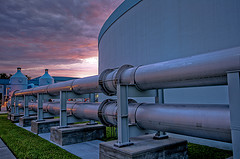- 3 reads

According to new research completed by the Water Technology Center in Karlsruhe, Germany, sewage treatment plants fail to completely remove artificial sweeteners from waste water. Traces of the artificial sweeteners were found in waters downstream of the water treatment plants. Researchers involved in the study warn that the chemicals may also appear in drinking water supplies.
This is the first study to indicate, that a number of commonly used artificial sweeteners are present in German waste and surface water. This was made possible by a new analytical method that extracts and analyses multiple chemicals simultaneously. The findings to the study were published in Springer's journal "Analytical and Bioanalytical Chemistry".
Through the use of the new method, the researchers were able to look for seven different artificial sweeteners - cyclamate, acesulfame, saccharin, aspartame, neotame, neohesperidin dihydrochalcone and sucralose – all at once. The tests detected four - acesulfame, saccharin, cyclamate, and sucralose - of the artificial sweeteners in the waters, indicating incomplete elimination during waste water treatment. Until now, only sucralose had been detected in aquatic environments.
Researchers compared the conventional waste water treatment by sewage treatment plants with advanced waste water treatment by soil aquifer treatment. Traces of artificial sweeteners were present in both cases, demonstrating that water purification methods are incomplete.
Artificial sweeteners, which add sweetness without calories, are used in many food products from sodas to breakfast cereals, as well as in drugs and sanitary products. The human body does not fully absorb these sweeteners, resulting in residue that is excreted into waste water.

